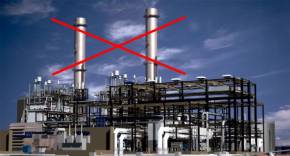|
|
 |
Turbomachinery Optimization and CFD Methods
at the Institute for Thermal Turbomachinery and Machine Dynamics |

|
CFD
|
| |
To support the task of improving the efficiency in turbomachinery CFD is applied to calculate the flow
through thermal turbomachinery. The flow analysis shall help to reduce the losses inside the blade
passages as well as in all flow guiding parts. For this purpose several self-developed and commercial
CFD codes are in use.
|

|
Cylce Optimisation |
|
| |
Parallel to the development of a thermal power plant for
optimal use of fossil fuels, research work also deals with the
use of artificial fuels, e.g. hydrogen. The basic idea is to
use oxygen and hydrogen produced by solar energy in a thermal
power plant, leading to a power plant which produces no emissions
to the environment. The main scientific objective of this work
is the design of a thermal cycle for optimum use of hydrogen
and the development of novel components of this cycle with internal
combustion of hydrogen and oxygen. In detail these components are:
The steam compressor working in the superheated steam region. |

homepage Graz-Cycle
|
| |
The high
temperature combustion chamber for the reaction of hydrogen and oxygen with cooling by steam (50 bar, 1200°C )
and the high temperature steam turbine to be designed according to gas turbine design philosophy. Further
the turbomachinery bladings have to be adjusted to the conditions of steam flow. In the case of steam as
working fluid compared to an air breathing gas turbine the density of the medium will be higher at the entry
to the turbine and the steam will have almost double the specific heat of an air combustion gas flow. These
conditions require intensive film cooling of the blades for a higher number of stages but at considerably
smaller surface of the blades to be cooled.
Since the production and transport of solar hydrogen is a matter of long term development research on an
alternative cycle is performed. Here, the cycle can be fired by methan and oxygen with steam as cooling medium.
This offers the possibility to extract the CO2 from the cycle and either store it or use it for technical
purposes, thus providing the possibility for CO2 retention in a way not achievable with standard power plants.
|
|